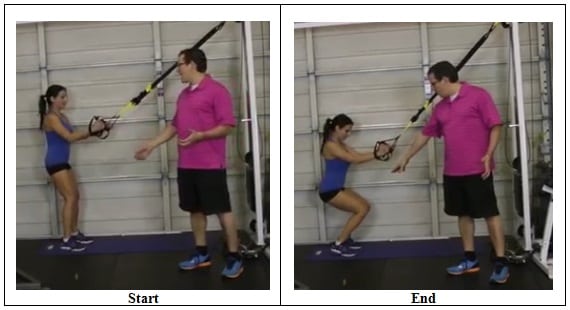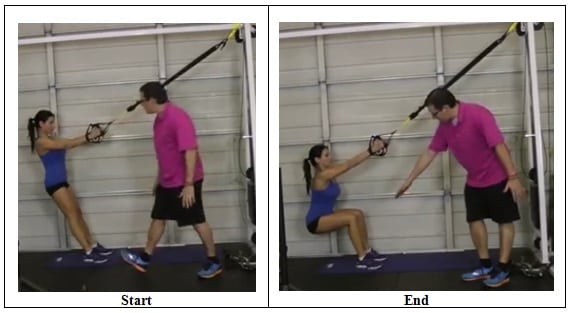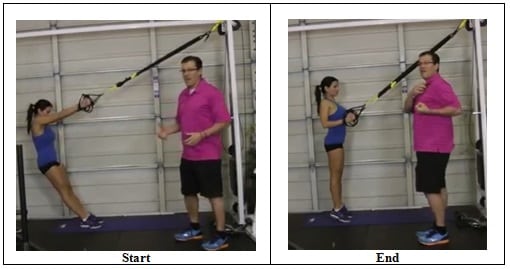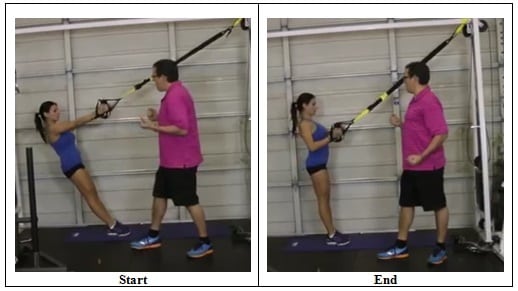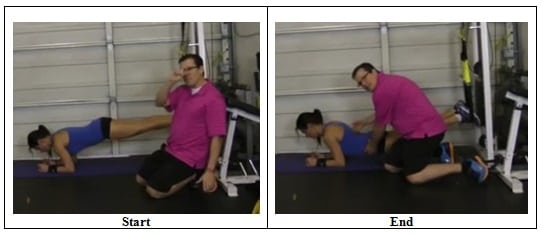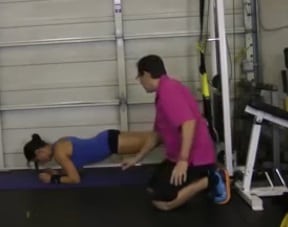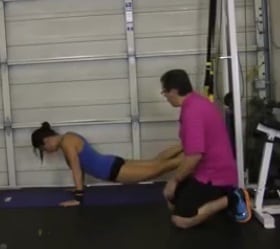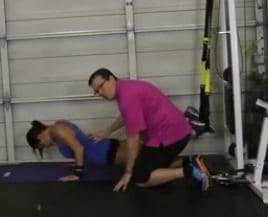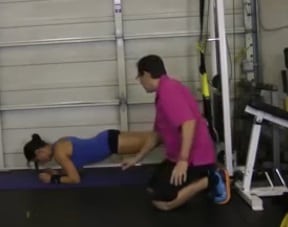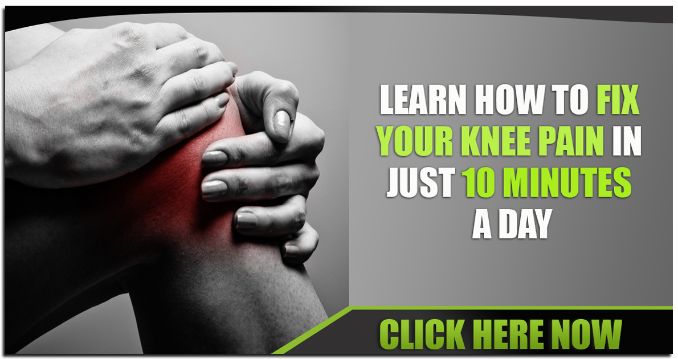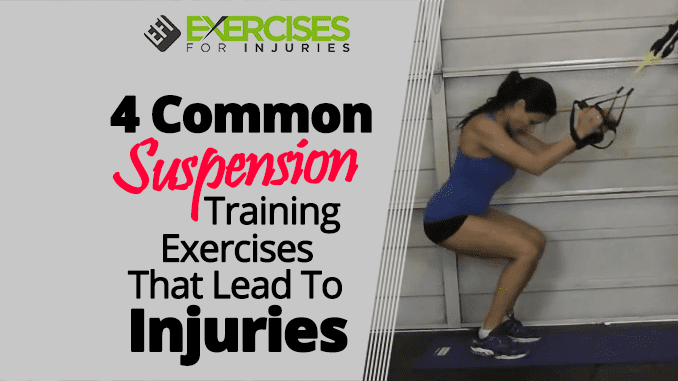
I was watching a few people working out with the suspension trainer and noticed some of the exercises they were doing. I could see how some of their exercises could lead to injuries and pain.
So, I wanted to do a video on 4 Common Suspension Training exercises that can lead to injury and pain.
YouTube to watch the YouTube video.
1. Suspension Training Squat Exercise
Leaning back and then squatting. Often you will see people grabbing the handles. Most of their weight is on their toes, and their knees are passing their toes.
Suspension Training Squat Exercise (wrong position)
They feel the quad muscles working, but it puts a lot of stress and strain on the knees, leading to pain and potentially a full-blown injury.
They should be leaning back with their weight on their heels and squatting like they are sitting in a chair. This becomes more of a glute/hamstring exercise than an actual quad muscle exercise.
Suspension Training Squat Exercise (correct position)
3. Suspension Training Rowing Exercise
Often people will get into the angled position, bringing the elbows back too far, bringing the chest and the head forward. Now the elbows are passing the body at 45 degrees. This puts a lot of stress and strain on the rotator cuff, AC joint, and shoulder. Also, bringing that head forward adds more stress and strain on that shoulder.
Suspension Training Rowing Exercise (wrong position)
You should be rowing back with the elbows, just passing the shoulders, and then coming back. You are strong through the head, shoulders, and hips, and the elbows are just passing through your shoulders.
Having strength in your upper body muscles is the right way to hit them. You are hitting the shoulder blade muscles, rhomboids, and lat muscles. You are focusing on the muscles instead of putting unnecessary stress and strain on the shoulder joint and the different joints within the shoulder.
Suspension Training Rowing Exercise (correct position)
3. Suspension Training Plank Exercise
Two things often happen here; the suspension trainer is too high up, so the individual is at too steep of a slope, and that steep of a slope puts unnecessary stress and strain on the shoulder and that AC joint. You want to ensure that the length allows you to get into a good plank position.
The other negative thing is people end up arching through the back, putting unnecessary stress on the back.
Suspension Training Plank Exercise (wrong position)
You are supposed to be tight in that core, tight in the glutes, and solid through that mid-back, core, and glute area.
Suspension Training Plank Exercise (correct position)
The plank exercise can be done from the forearms, or it can be done from the hands.
4. Suspension Training Push-Up Exercise
Like the plank, people are not adjusting the straps to the right length so that they might be too low or too high.
Suspension Training Push Up (Too Low)
Often people make them too short, which places them at an angle, putting too much stress and strain on the shoulder and the collar bone joint.
Suspension Training Push Up (Arching the Back)
The second is the excessive arching of the back and dropping of the hips. They will drop those hips, bringing too much arch in the low back.
You want to stay strong in that core, bring the hips up, and then come back down.
Suspension Training Push Up (Correct Position)
You want to be in a good plank position. You want to ensure that the suspension trainer is at a good length to allow you to be parallel to the floor.
There you go! When going through those four common suspension training exercises, make sure you are making those modifications to benefit from the exercise and not setting yourself up for injury or pain.
Final Word
Make sure to swing by ExercisesForInjuries.com. Enter your injury or pain in the search bar. There is a good chance that I have a video, an interview, or an article to help you overcome your pain.
Second, if you watch this on YouTube, head above and hit “Subscribe.” Every couple of days, you will receive a video like this where I talk about how to overcome injury and pain.
Third, head down below hit “Like,” and leave me a question or comment.
Take care!
Rick Kaselj, M.S
If you or your training partner suffers from knee discomfort, then click here to check out the Knee Pain Solved program.

